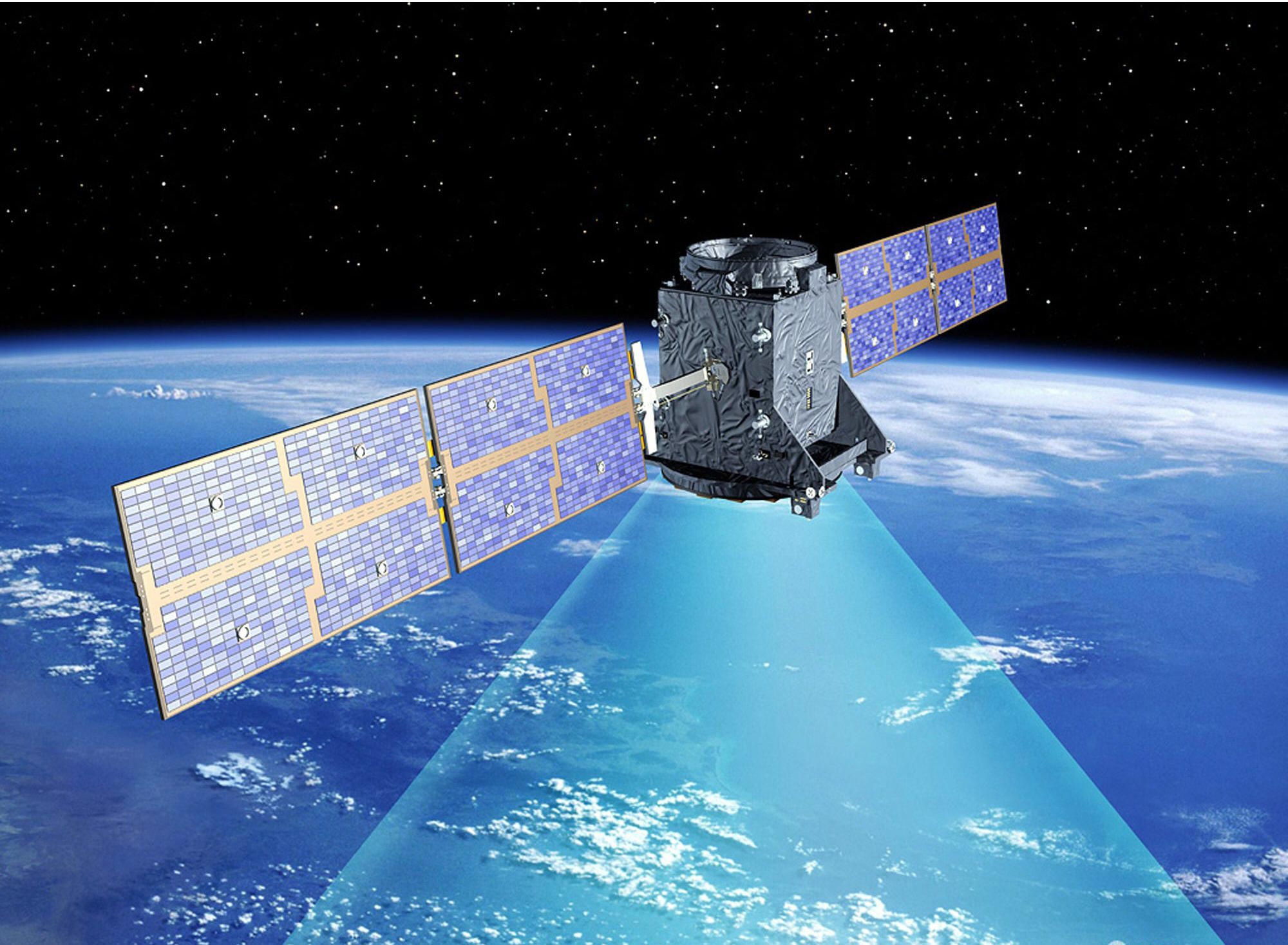Reducing greenhouse gas emissions resulting from human activity is not only necessary to combat climate change on Earth but also to preserve the health of outer space and our access to it - in other words, to continue having satellites that provide us with all kinds of services, from telecommunications to defense and weather prediction. This is revealed in a study published this Monday in the journal Nature Sustainability, which states that climate change can literally affect the space available for satellites to operate safely.
According to calculations by the team of researchers from the Massachusetts Institute of Technology (MIT) and the University of Birmingham who authored the study, the increase in greenhouse gas emissions could shrink the outermost layers of the atmosphere - the mesosphere (50-85 km altitude) and the thermosphere (85-600 km).
The accumulation of large amounts of these greenhouse gases would cause a cooling and contraction effect. This contraction reduces the density of Earth's orbital space, resulting in a decrease in satellites de-orbiting due to friction (gradually losing altitude until they re-enter Earth's atmosphere, where they are destroyed by high temperatures instead of remaining in space generating more space debris).
This friction is useful because it reduces the orbital energy of satellites, making it more likely for them to return to Earth after several years of being inoperative.
As a consequence of the decrease in the ability to de-orbit, the amount of time that space mission debris remains in orbit would be extended. In practice, this would lead to a reduction in the maximum number of artificial satellites that can orbit Earth without a significant risk of collisions. According to the calculations of this new modeling study, by the year 2100, the payload capacity of satellites operating at altitudes between 200 and 1,000 kilometers could decrease by 50 to 66% compared to the levels in 2000 if the worst emission scenarios occur. The final percentage will also depend on the amount of solar radiation.
The problem of space debris
Satellite debris left floating in space when they become inoperative continues to grow, and the problem is worsening as the number of space launches has significantly increased in recent years. As noted by William Parker, co-author of the study, it is estimated that more satellites have been launched into space in the last five years than in the previous 60 years combined.
In addition to traditional satellites, smaller artifacts from constellations like SpaceX's Starlink, which currently has around 8,000 satellites providing internet access in remote areas, are also contributing to the issue.
Currently, there are about 10,000 satellites orbiting Earth. The International Space Station (ISS), where astronauts live permanently, is at 400 kilometers, and its orbit needs to be adjusted periodically to avoid collisions with space debris fragments. "One of the key aspects we are trying to understand is whether this current trend is sustainable," the researcher commented in a press release.
The technology for a satellite orbiting Earth to self-destruct at the end of its lifespan by re-entering Earth already exists, as well as international protocols establishing best practices among space agencies and sector companies to ensure that their artifacts do not generate space debris, but these are not mandatory. Additionally, collisions between space junk pieces multiply the fragments floating in space.
Therefore, as the number of satellites in Earth's orbit increases, persistent space debris poses a growing problem for the long-term use of Earth's orbital space.
The influence of solar activity
The thermosphere naturally contracts and expands every 11 years in response to the Sun's regular activity cycle. When solar activity is low, Earth receives less radiation, and its outer atmosphere cools and temporarily contracts before expanding again during the solar maximum.
In the 1990s, scientists wondered if greenhouse gases influence the thermosphere. Their preliminary models showed that while the gases trap heat in the lower atmosphere, where we experience global warming, these same gases radiate heat at much higher altitudes, effectively cooling the thermosphere. With this cooling, they predicted that it should shrink, reducing atmospheric density at high altitudes.
In the last decade, scientists have been able to measure how these changes affect satellite drag, providing some evidence that the thermosphere is contracting in response to something beyond the Sun's natural 11-year cycle.
William Parker and his colleagues decided to use atmospheric models to estimate the number of satellites that can be sustainably maintained in Earth's orbit by 2100 under different emission scenarios. In other words, how different levels of greenhouse gases will affect the thermosphere and its ability to safely accommodate satellites.
"We often only think about the repercussions of climate change on Earth's surface or in the sea, but this research shows that the impacts will reach space," states Matthew Brown, a researcher at the University of Birmingham and co-author of the study. As he warns in a statement, "there is already a debate about how many satellites can be put into space at the same time, as more and more artifacts are being launched into low Earth orbit. If this proliferation is not controlled, we run the risk of entering what is known as the Kessler syndrome, where a chain reaction of collisions renders space unusable."
